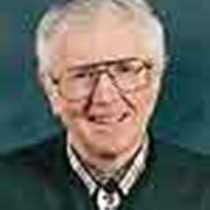Petersburg
With a mirror-smooth Stephens Passage and cloudless sky, the Sea Lion cruised into Petersburg, an epicenter for commercial fishing from Southeast Alaska to the Bering Sea. Our mooring was surrounded with a varied fleet of large and small vessels variously designed and rigged to take five species of salmon, halibut, blackcod, lingcod, pollock, herring, crab, and shrimp.
Commercial fishing is Alaska’s number one industry, followed now by tourism. No community better represents the importance of wealth gleaned from the adjoining sea and its passages than Petersburg. Alaska’s “Little Norway” was founded in 1897 by immigrants who had boat building, fishing and seafood processing skills that have kept this town of 3,000 bustling while others have come and gone with boom and bust based on resource extraction.
From lunch until dinner our guests had time to explore the “real Alaska” around this town and its harbor backed by gleaming ice fields of the Coast Range. Some also went by Zodiac across Wrangell Narrow to explore sphagnum bogs with our naturalists. Others joined our harbor walk to learn about the various fishing craft. Compared to many world commercial fisheries, Alaska’s are the best managed, in part through limited entry restricting the number of participants in each management areas.
We saw jaunty limit purse seiners (limit meaning none can be more than 58 feet in length) which catch herring and chum and pink salmon by encircling them with a long net that is pursed or closed off through brass rings at the bottom. The net is retrieved through a power block suspended off a boom. A small boat or “power skiff” carried on the stern takes one end of the net to complete rapid encirclement of the fish school.
We talked to a gillnetter who showed us the salmon he’d taken that morning by setting his curtain-like net perpendicular to the current and travel direction of the salmon. Gillnetters are small, 30 to 40 feet, and recognized by a drum on bow or stern on which the net is rolled. Smaller open craft filled with shrimp pots were landing prawn-sized shrimp caught nearby on the rocky channel floor. Locals come down to buy buckets of prawn off the dock to broil and serve that night with melted butter and garlic.
Along the outer dock were 100 plus foot steel-hulled crabbers piled high with the heavy rectangular pots fished for king and tanner crab in the Gulf of Alaska and Bering Sea. Smaller crabbers that fish the coastal shallows with round pots for Dungeness crab landed the dinner we relished tonight—all the fresh crab we could could crack and pick.
We examined longliners that catch halibut, blackcod and rockfish via a long line laid along the ocean floor. Attached are leaders with hundreds of baited hooks. Either end of the half-mile or more “set” is marked by a fluorescent red, orange or yellow float buoy with flag. A house or weather cover on the stern, where the crew bait lines and retrieve the catch, identifies a longliner.
The largest ships were trawlers that tow cone-shaped nets with “doors” on each side to hold them open. Huge winches retrieve the net on a drum, and the “bag” or “cod end” holds the catch. Depending on the depth fished it may be the small cocktail shrimp, Pollock, or bottom fish like flounder and sole.
It was a brim full day that started with the long hikers off at 8 a.m. for a Zodiac landing in Thomas Bay on the mainland coast where we followed a Tongass National Forest trail upward alongside plunging Cascade Creek. Moose “nuggets” and wolf tracks along the trail told of other users.
With a mirror-smooth Stephens Passage and cloudless sky, the Sea Lion cruised into Petersburg, an epicenter for commercial fishing from Southeast Alaska to the Bering Sea. Our mooring was surrounded with a varied fleet of large and small vessels variously designed and rigged to take five species of salmon, halibut, blackcod, lingcod, pollock, herring, crab, and shrimp.
Commercial fishing is Alaska’s number one industry, followed now by tourism. No community better represents the importance of wealth gleaned from the adjoining sea and its passages than Petersburg. Alaska’s “Little Norway” was founded in 1897 by immigrants who had boat building, fishing and seafood processing skills that have kept this town of 3,000 bustling while others have come and gone with boom and bust based on resource extraction.
From lunch until dinner our guests had time to explore the “real Alaska” around this town and its harbor backed by gleaming ice fields of the Coast Range. Some also went by Zodiac across Wrangell Narrow to explore sphagnum bogs with our naturalists. Others joined our harbor walk to learn about the various fishing craft. Compared to many world commercial fisheries, Alaska’s are the best managed, in part through limited entry restricting the number of participants in each management areas.
We saw jaunty limit purse seiners (limit meaning none can be more than 58 feet in length) which catch herring and chum and pink salmon by encircling them with a long net that is pursed or closed off through brass rings at the bottom. The net is retrieved through a power block suspended off a boom. A small boat or “power skiff” carried on the stern takes one end of the net to complete rapid encirclement of the fish school.
We talked to a gillnetter who showed us the salmon he’d taken that morning by setting his curtain-like net perpendicular to the current and travel direction of the salmon. Gillnetters are small, 30 to 40 feet, and recognized by a drum on bow or stern on which the net is rolled. Smaller open craft filled with shrimp pots were landing prawn-sized shrimp caught nearby on the rocky channel floor. Locals come down to buy buckets of prawn off the dock to broil and serve that night with melted butter and garlic.
Along the outer dock were 100 plus foot steel-hulled crabbers piled high with the heavy rectangular pots fished for king and tanner crab in the Gulf of Alaska and Bering Sea. Smaller crabbers that fish the coastal shallows with round pots for Dungeness crab landed the dinner we relished tonight—all the fresh crab we could could crack and pick.
We examined longliners that catch halibut, blackcod and rockfish via a long line laid along the ocean floor. Attached are leaders with hundreds of baited hooks. Either end of the half-mile or more “set” is marked by a fluorescent red, orange or yellow float buoy with flag. A house or weather cover on the stern, where the crew bait lines and retrieve the catch, identifies a longliner.
The largest ships were trawlers that tow cone-shaped nets with “doors” on each side to hold them open. Huge winches retrieve the net on a drum, and the “bag” or “cod end” holds the catch. Depending on the depth fished it may be the small cocktail shrimp, Pollock, or bottom fish like flounder and sole.
It was a brim full day that started with the long hikers off at 8 a.m. for a Zodiac landing in Thomas Bay on the mainland coast where we followed a Tongass National Forest trail upward alongside plunging Cascade Creek. Moose “nuggets” and wolf tracks along the trail told of other users.




